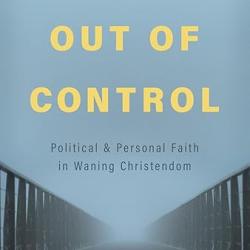This is a book everyone interested in Calvinism, whether for it, against it or simply thinking about it, should read. I am told it will be available within the next few weeks if not already. It’s an engaging read, very informative and stimulating.
My review of it (separate from this one) will be published in May. I’ll announce where later when I get final word of acceptance from the editors of the publication. Here I will make a few remarks about the book, but not pre-publish my review. You’ll have to wait until May to read my full review.
I approached Ten Myths thinking I was going to get a tongue lashing from a dyed-in-the-wool Calvinist. Nothing like that happened. Stewart’s main concern seems to be to get Calvinists to be more cognizant of their own history. Of course, along the way he demonstrates the falsity of several misconceptions of Calvinism held by both Calvinists and non-Calvinists.
Here are the myths: 1) One man (Calvin) and One City (Geneva) is determinative [for all Calvinists]; 2) Calvin’s view of predestination must be ours [i.e., Calvinists’]; 3) TULIP is the yard stick of the truly Reformed; 4) Calvinists take a dim view of revival and awakening; 5) Calvinism is largely antimissionary; 6) Calvinism promotes antinomianism; 7) Calvinism leads to theocracy; 8) Calvinism undermines the creative arts; 9) Calvinism resists gender equality, and 10) Calvinism has fostered racial inequality.
The first four myths are said to be held mainly by Calvinists themselves whereas the last six are held by (some) non-Calvinists. I have not believed any of these myths for many years and can’t even remember whether I ever did believe them. Fortunately, I had a very good seminary education that presented Calvinism and non-Calvinism in a very balanced and fair way. (One of my seminary professors was James Montgomery Boice and another was Sam Mikolaski. Boice, of course, was a Calvinist and I consider Mikolaski an Arminian whether he uses that term for himself or not.)
Stewart does a very good job of demolishing all ten myths using primary historical sources. I think he goes a little too easy on Calvin (in the chapter on theocracy) in his discussion of the Servetus affair, but overall and in general his history is sound. Calvinism as such is not guilty of these things–any more than other Protestant traditions.
I suspect most flack at Stewart’s book will come from the cranky and brittle wing of contemporary Calvinism because he criticizes them heavily. He contends that Reformed theology is broader than Calvin and the stream that extends from him. He contends that TULIP is not even a good rubric for expressing the essence of Reformed theology. And he rejects double predestination including especially the “horrible decree” of reprobation.
But most importantly he takes after contemporary Calvinists for being cranky and brittle and for pretending to themselves as well as others that their Calvinist theology just fell from heaven without historical mediation. Among other things he says “We need fewer angular, sharp-elbowed Calvinists who glory in what distinguishes their stance from that of others, and a lot more supporters of the Reformed faith who rejoice in what they hold in common with others.”
This is clearly aimed at those Calvinist leaders who claim, among other things, that Calvinism and Arminianism are two entirely different world views and that Arminianism is at best defectively evangelical and at worst heresy.
Stewart calls on contemporary Calvinists to study their own history to find that the Reformed tradition is broad and flexible and diverse and that the contemporary “young, restless, Reformed” movement did not just pop into existence from nowhere; it is the sixth in a series of Calvinist resurgences since the French Revolution and it has its own history and tendencies that are not synonymous with “true Calvinism.”
Nowhere in the book does Stewart depart from historical Reformed theology; he endorses the essence of TULIP while arguing that the TULIP rubric is of recent vintage and expresses the Calvinist essence in an unfortunate and misleading way.
I cannot recommend this book highly enough. If you claim to know about Calvinism or claim to want to know about Calvinism this is a must read. From here on out I will refuse to consider anyone truly informed about Calvinism if they have not read this book or at least show clear evidence of already knowing its material (which is unlikely as the material in it is massively detailed).
I hope the fanatical Calvinists of new Calvinism movement (and I don’t lump all of them together as fanatical–only some are) read this and allow its message to sink in–especially Stewart’s statement (well argued) that “TULIP cannot be allowed to function as a creed.”












